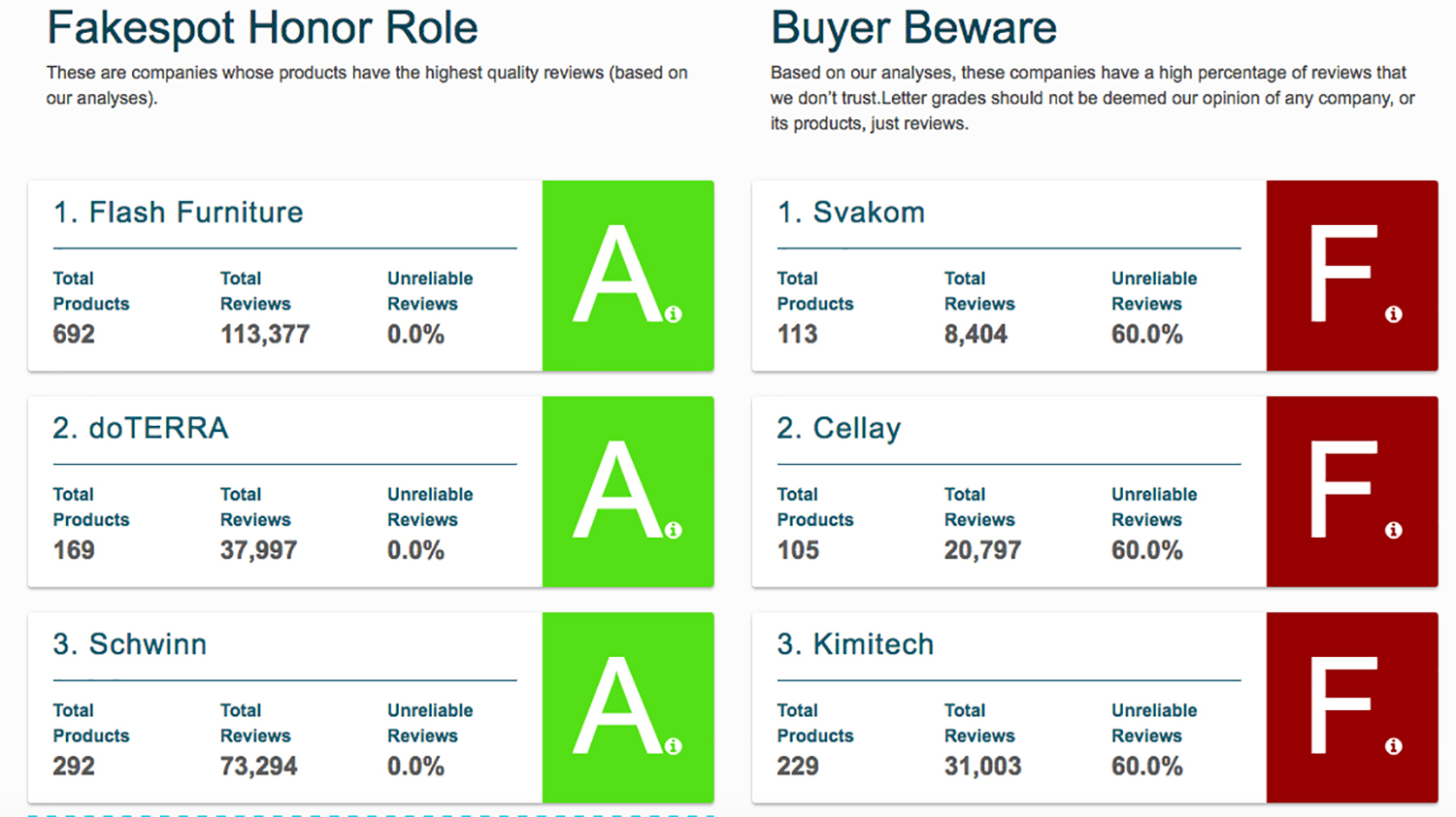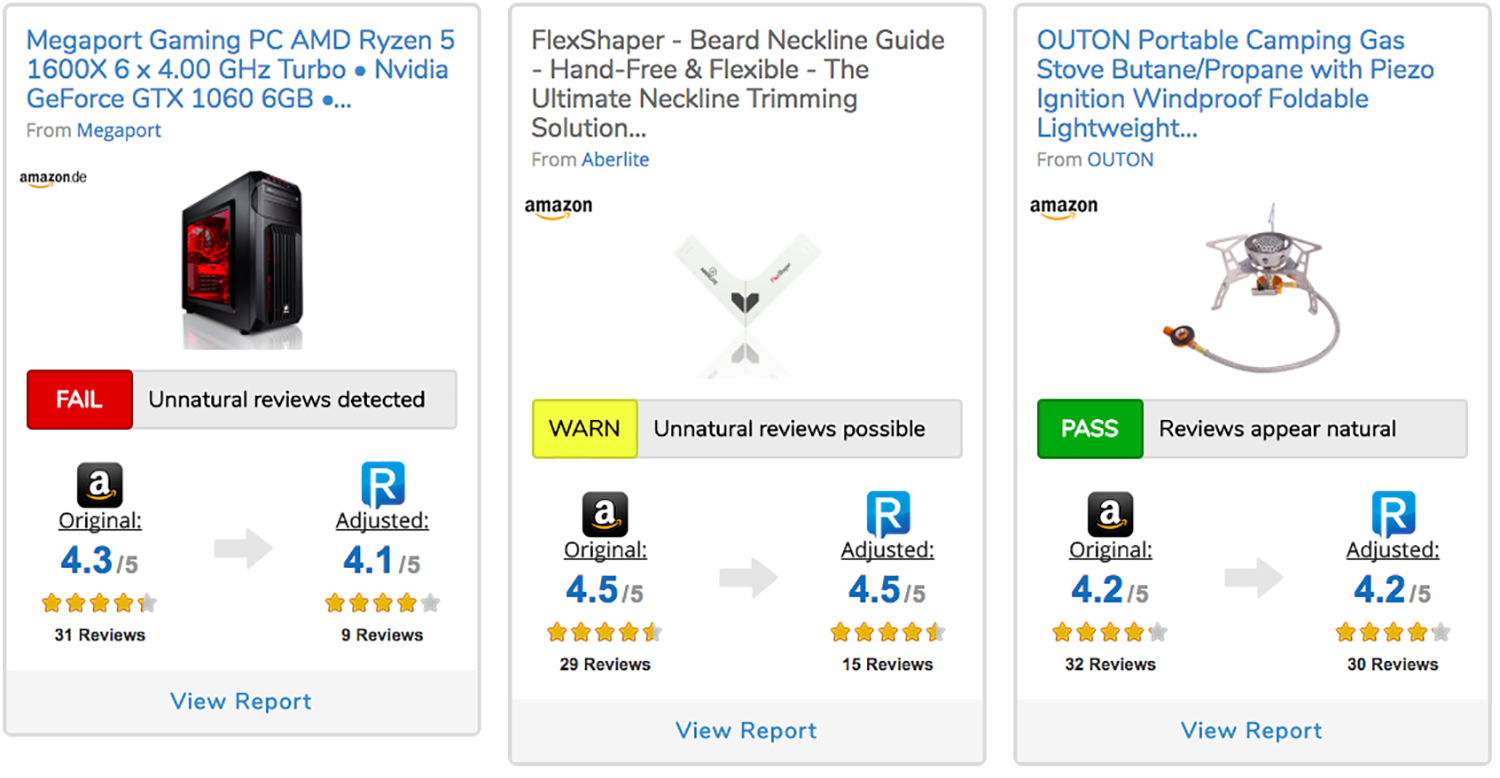How to Spot Fake User Reviews: Amazon, Best Buy and More
Learn to separate real buying advice from fake endorsements when you shop for products.
Chances are, you've already seen them. These overly positive, or sometimes overly negative, reviews can be found on mainstream shopping and review sites, including Amazon, Best Buy, Yelp and more.

Everyone from manufacturers to PR companies are encouraging incentivized reviews in the hopes of generating buzz for their products. Although retailers have tried to crack down on suspected fake reviewers, the problem persists.
So how can you differentiate a fake review from an honest opinion? We're sharing some of our favorite tools and tricks for weeding out those fake endorsements.
Fakespot
Fakespot is one of the easiest and best tools for flagging fake reviews. Currently, the site works with Amazon, Yelp, TripAdvisor and the Apple App Store. Simply drop the store's URL into Fakespot's engine, and the site's algorithm will spit out a letter grade indicating the quality of reviews found on that page.

In addition to its website, Fakespot has a browser extension that you can use with Chrome or Firefox.
Fakespot will also grade the company based on the number of high-quality reviews it's earned (see above). For instance, a Fakespot analysis of Amazon's Echo Dot displays that Amazon as a company has a "C" grade, and the quality of reviews on the Echo Dot product page also earned a "C" with 68 percent of them marked as reliable.
One thing to keep in mind when browsing Fakespot is that the grades apply only to the reviews, not the product itself. Sticking with the Echo Dot example, we gave Amazon's mini speaker a 9-out-of-10 rating, so this is clearly not a "C" product.
Sign up to get the BEST of Tom's Guide direct to your inbox.
Get instant access to breaking news, the hottest reviews, great deals and helpful tips.
MORE: Augmented Reality Glasses: What You Can Buy Now (or Soon)
ReviewMeta
Like Fakespot, ReviewMeta is a free site that helps consumers separate good reviews from bad ones. The site doesn't look for "fake" reviews but rather "unnatural" reviews — whether they’re overly positive or negative — that show signs of manipulation and blur the line between true customer feedback and a sales pitch.

ReviewMeta also has browser extensions for Chrome and Firefox.
ReviewMeta runs 12 different tests that look for suspicious traits and then adjusts the rating on a retailer's site while also offering a Pass, Warn or Fail grade. ReviewMeta admits that the process isn't foolproof and says its preliminary grades don't review the actual product. Rather, the company analyzes the quality of a product's reviews to help buyers make smarter buying decisions.
ReviewMeta also suggests you sign up for a full report, which takes a few minutes to process but breaks down the site's findings in a more detailed fashion. The report is sent to your email address for free.
We tested the same Echo Dot page on ReviewMeta, which churned out a Fail grade with an adjusted rating of 4.1 out of 5. (The original Amazon page had a 4.3-out-of-5 rating.)
ReviewMeta works only with Amazon. Unlike Fakespot, it offers detailed reports of its findings, which you can use before making a purchase.
Other tips for spotting fake reviews
While tools are certainly helpful, there are also some commonsense tactics for weeding out fake reviews.

Examine the language. If a review reads like an infomercial, has multiple typos or is overly dramatic, chances are, it's fake. Look for language that is unnatural or WRITTEN IN ALL CAPS. Reviews that constantly repeat a product's full name are also likely attempts to boost a company's SEO ranking.
Look for the details. You can easily spot a fake — or at least a poorly written review — based on the amount of detail it provides. If a reviewer praises or condemns a product but gives no specific reasons why, it's a bad review. A good reviewer will tell you what they liked or disliked about a product rather than fill their review with generic lines like "best product ever."
Investigate the reviewer. Often, people who write fake reviews make their write-ups short and formulaic. If you're uncertain about a particular review, click on the reviewer's username, and glance over other reviews they've posted on the site. If they're all overly positive or written within a very short time frame, you're probably looking at someone who was incentivized to write their review.
MORE: Best Presidents Day Deals of 2018: TVs, Laptops and More
Bottom line
A good user review should help you make a better buying decision. If it leaves you with more answers than questions, you're better off looking elsewhere. We also suggest reading user reviews from multiple sites rather than relying on reviews from one store or website.
As deals editor-in-chief at Tom’s Guide, Louis is constantly looking for ways to avoid paying full price for the latest gadgets, appliances, and apparel. With over 10 years of deals-hunting experience, Louis price checks against multiple retailers and searches high and low for the best deals to bring readers. He's also always on the look out for the best coupon codes to use when shopping. A born-and-bred New Yorker, Louis is also an avid swimmer and marathoner. His work has appeared on Gizmodo, CNET, and Time Out New York.
